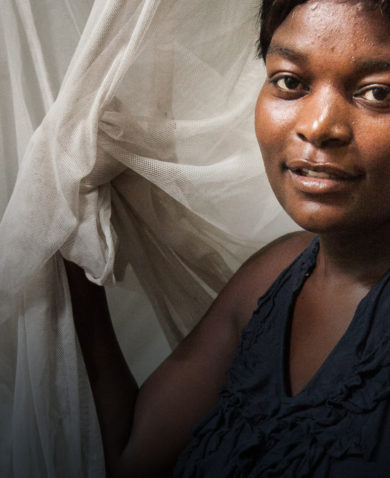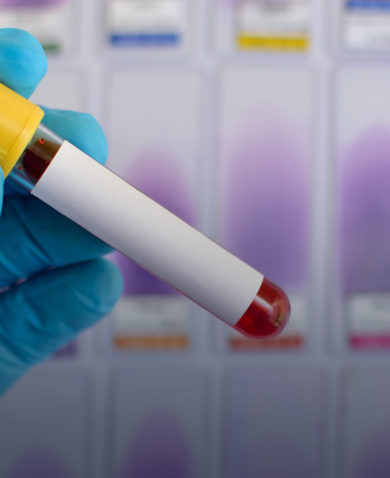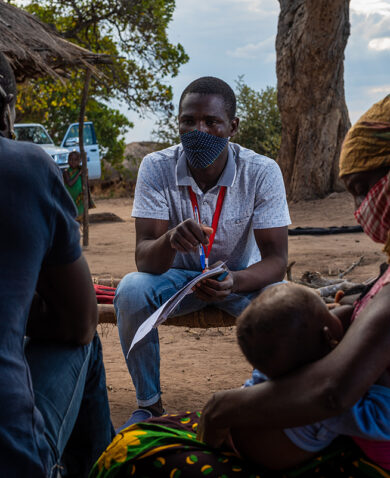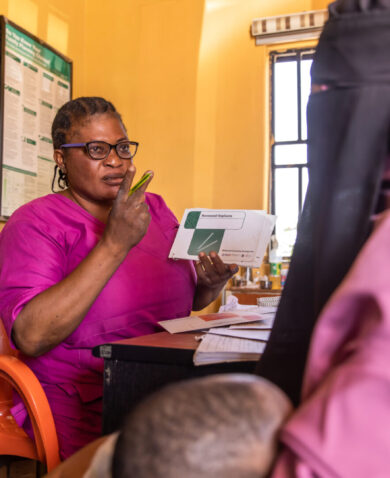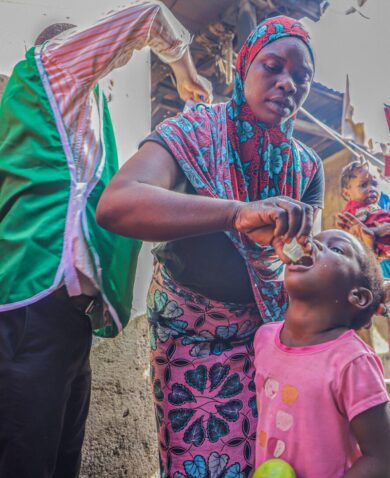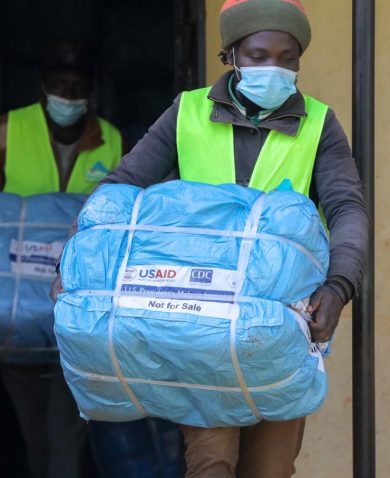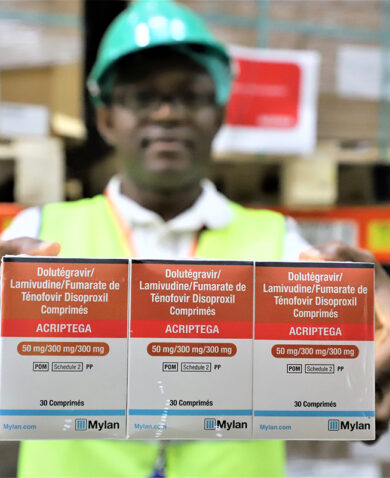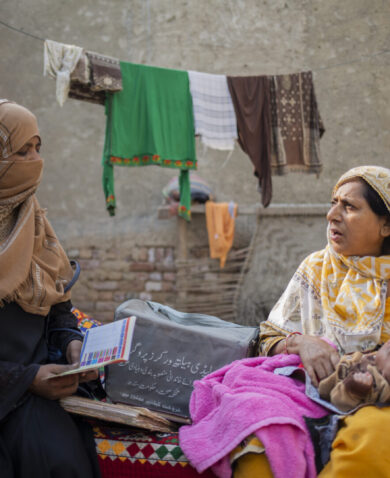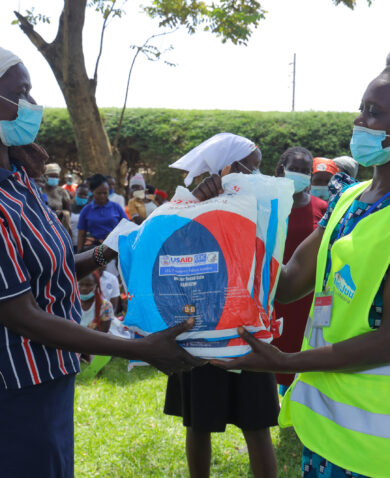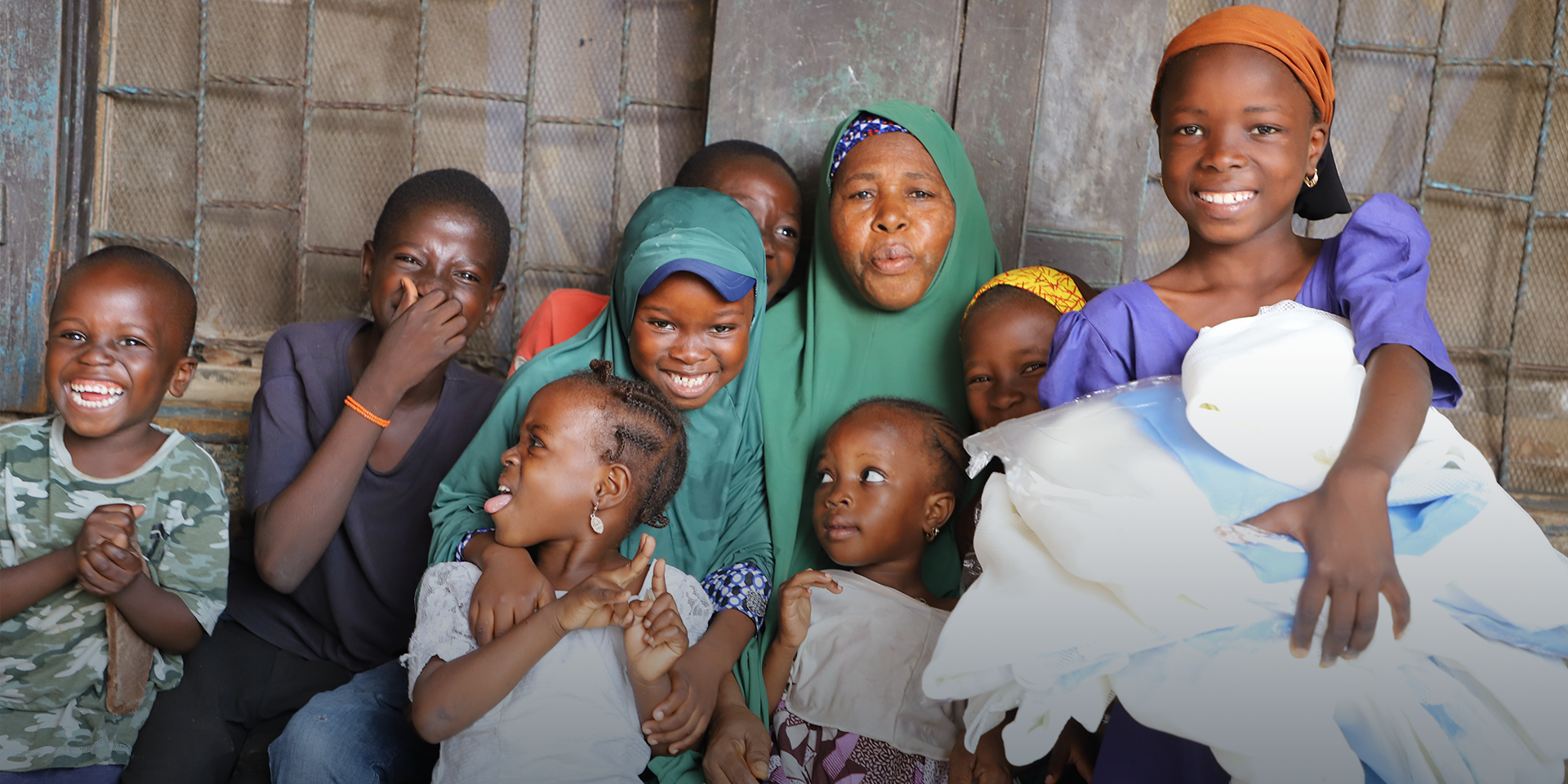
A Second Malaria Vaccine Is Approved. Here’s How to Help It Fulfill Its Potential
October 18, 2023 | 4 Minute ReadWe welcome the R21 vaccine as a complimentary, cost-effective, and affordable malaria prevention approach, and we share practical recommendations to maximize its impact.
In October 2021, we celebrated the most significant breakthrough in three decades of malaria research: the World Health Organization (WHO) recommended RTS,S/AS01 (RTS,S or Mosquirix), the first vaccine endorsed for prevention of malaria in children and infants. So far, the vaccine has protected more than 1.2 million children under two in Ghana, Kenya, and Malawi against contracting malaria, and, once fully rolled out, is expected to avert 23,000 child deaths a year in countries with high incidence of malaria. At the time, Chemonics provided a series of recommendations to ensure its success.
Almost two years later, in October 2023, the WHO recommended a second malaria vaccine, R21/Matrix-M. R21 is gaining attention with clinical trial results showing it is more efficacious, cost-effective, and affordable than RTS,S. As such, the R21 vaccine is a welcome addition to the global malaria prevention toolkit, especially when other vector control interventions like the use of insecticide-treated nets (ITNs) and indoor residual spraying (IRS), as well as treatment medicines face increasing vector and parasite resistance. Additionally, the Anopheles Stephensi mosquito, native to South Asia but recently detected in Africa, threatens to put approximately 126 million more people in Africa at risk of malaria. This calls for concerted efforts to use a combination of proven malaria interventions, including vaccines, to avert new cases and deaths.
R21 is cost-effective and has the potential to promote greater accessibility and equity in the fight against malaria, even considering recent and significant funding shortfalls. R21 has 66% efficacy after three doses, durable protection against malaria for up to 12 months (with restored efficacy for a total of 18 months after a booster), and a price of just USD$2-4 per dose (75% lower than RTS,S at USD$10 per dose). Furthermore, R21’s co-developer and current manufacturer, The Serum Institute of India, has an expected production capacity of more than 100 million doses per year with plans to double this figure in the near future. This could be 10 times the number of RTS,S doses, with GSK—the manufacturer—expecting to produce approximately 18 million doses by 2025, with 4 million doses becoming available in late 2023 alone. This increased supply for both vaccines will meet an anticipated steady-state demand of between 80-100 million doses per year. Thanks to R21, it is more likely that supply can meet demand.
While the WHO’s recommendation of a second malaria vaccine is indeed good news, we must consider the lessons learned from the distribution of RTS,S and other lifesaving malaria prevention interventions. We must proceed with careful planning, rigorous research, and a commitment to equitable access to ensure this vaccine fulfills its potential. We recommend the following considerations in rolling out the new R21 vaccine:
1. Include R21 as part of an integrated malaria response.
Funding to support the widespread rollout of R21 will likely impact how other important malaria control interventions are prioritized and funded. As sustainable rollout mechanisms are put in place, R21 must complement rather than replace existing malaria control measures. Furthermore, R21 requires three initial injections followed by a booster 12 months later for sustained efficacy. In under resourced populations, where we expect vaccine roll out to be much slower, caregivers may struggle to bring their children to health facilities far from their communities for all four doses. As such, we should continue to support ITNs, IRS, and other drug-based preventive strategies as crucial components alongside vaccines in the fight against malaria. We should also consider equipping and positioning community health workers (CHWs) with the necessary training, supervision, and supply chain support to safely transport and administer R21 to hard-to-reach areas.
2. Monitor R21’s safety through post-market surveillance.
While R21 has been shown to be safe in clinical trials, we must continually ensure that its benefits outweigh any potential risks. Post-market surveillance from larger and more diverse populations will provide essential information on R21’s long-term safety and efficacy. Factors such as variations in malaria transmission, healthcare infrastructure, and local population characteristics can impact vaccine performance and systemically collected data will enhance our collective capacity to detect infrequent side effects or safety concerns.
3. Address implementation challenges while leveraging existing best practices and tools.
To successfully deploy R21 in malaria-endemic regions, national and local governments, health workers, the private sector, and international organizations must coordinate to overcome logistical challenges like cold chain storage. Tracking and monitoring coverage for different doses will be essential, as a child must receive the full three-dose series to ensure the vaccine’s efficacy. Existing mechanisms—including those developed for COVID-19―for data capture, management, analysis, and use for decision making should be leveraged as large volumes of the vaccine are delivered. For example, patient reminders, whether delivered by automated systems or community health workers can reduce loss-to-follow-up.
4. Utilize existing structures to roll out R21 to high-need areas effectively.
The WHO, Gavi, and other key stakeholders have established a framework to prioritize and deliver RTS,S to high-need populations. The global malaria community should build on this framework to ensure that R21 is rapidly deployed to provide sufficient coverage. Furthermore, the Serum Institute of India announced R21 will be manufactured locally in Ghana, where production can begin as soon as the Accra-based facility is complete. This local manufacturing capacity will greatly increase the rapid and equitable distribution of R21 across Africa.
5. Prioritize community mobilization activities for effective vaccine uptake.
A comprehensive community mobilization approach should tailor messaging and promote health education around R21’s safety and efficacy that respects local beliefs and practices while also engaging trained community leaders and health workers. Additionally, R21 uptake will succeed by forging local partnerships to monitor vaccine distribution; addressing vaccine hesitancy through, for example, community dialogues; establishing feedback mechanisms; and conducting continuous evaluations to measure vaccine acceptance, transparency, and accessibility.
We owe it to the millions who have suffered, and continue to suffer, from malaria to pursue every avenue of prevention and treatment. With continued dedication, cooperation, and a comprehensive toolkit to implement multi-pronged approaches, we can eradicate malaria.
Banner image caption: A woman and her children smile at the camera after receiving ITNs donated by the U.S. President’s Malaria Initiative in the Sabo Community, Oyo State, Nigeria. Credit: GHSC-PSM
Posts on the blog represent the views of the authors and do not necessarily represent the views of Chemonics.










